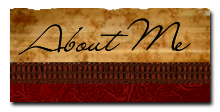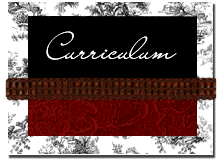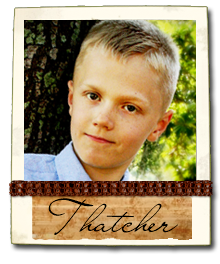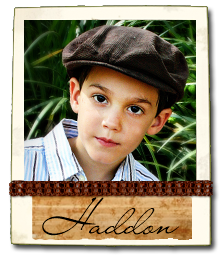I've had several readers ask questions recently. I thought I would answer here just in case anyone else was wondering the same thing.
I was wondering how you got through all the CM reading--did you read the revised/modern one on-line? Each time I want to, I start and it is just so much information to consume. Would you mind sharing?
Well, I have not gotten through nearly as much CM reading as I would have liked. I have only read Volume 1 in Miss Mason's six volume Home Education series as well as Catherine Levison's books, A Charlotte Mason Education and More Charlotte Mason Education.
I did read Volume 1 in Modern English and plan on reading Volume 6 next. I have been told those are the most helpful in getting started as they are the most practical. Then I will fill in the gaps reading Volumes 2-5. I plan on reading all six volumes in Modern English because I will be able to proceed through them much more quickly in order to begin applying concepts. I would love to go back someday and re-read her works a second time in her original Victorian style English though!
When I started, I went to the Ambleside site and actually printed off only the first section of Volume 1. I would have been overwhelmed if I had initially printed it in its entirety. As I finished one section I would return to the computer to print the next. I chose to print them rather than read on-line because I need to interact with the text when I read: hold the pages, write thoughts and questions in the margins, and underline important concepts.
I was hesitant to get started but it was Tami at Ambleside Classical who kept encouraging me. She encouraged me not to simply read others interpretations/summaries of CM's writing but to go to them myself. Her gentle encouragement gave me the push I needed to "Just Do It!" (Wouldn't Nike be proud?!) Hopefully this will encourage someone who has been wanting to read for themselves to "Just Do It" too!
I did read Volume 1 in Modern English and plan on reading Volume 6 next. I have been told those are the most helpful in getting started as they are the most practical. Then I will fill in the gaps reading Volumes 2-5. I plan on reading all six volumes in Modern English because I will be able to proceed through them much more quickly in order to begin applying concepts. I would love to go back someday and re-read her works a second time in her original Victorian style English though!
When I started, I went to the Ambleside site and actually printed off only the first section of Volume 1. I would have been overwhelmed if I had initially printed it in its entirety. As I finished one section I would return to the computer to print the next. I chose to print them rather than read on-line because I need to interact with the text when I read: hold the pages, write thoughts and questions in the margins, and underline important concepts.
I was hesitant to get started but it was Tami at Ambleside Classical who kept encouraging me. She encouraged me not to simply read others interpretations/summaries of CM's writing but to go to them myself. Her gentle encouragement gave me the push I needed to "Just Do It!" (Wouldn't Nike be proud?!) Hopefully this will encourage someone who has been wanting to read for themselves to "Just Do It" too!
Could you share how a WTM-style narration and a CM-style narration have looked different to you? We do WTM-style right now and it seems so...artificial, or forced, or something.
I talked a little about this in my last post comparing CM to Classical, so here I thought I'd share a few quotes from the authors themselves. First Susan Wise-Bauer's ideas on narrations...
Narration is a way to develop the child's understanding and storytelling skills. The process is simple: the child tells you what he's just heard or read. ...In first grade, you begin to ask the child to summarize the plots of short simple stories...Narration lets you know how much a child retains and understands. It also develops vocabulary and powers of expression, and lays the foundation for good writing later on.The Well Trained Mind, p. 55 (emphasis mine)
Narration removes the need for "comprehension exercises." Instead of learning to complete fill-in-the-blank questions, the child uses all his mental faculties to understand, sort through, reorganize and relate the main points of a story.The Well Trained Mind, p. 59 (emphasis mine)This process (of narration) developed the student's comprehension skills and taught him how to tell the difference between irrelevant details and important elements of plots or argument.The Well Trained Mind, p. 272And now Charlotte Mason's ideas on narration...Narrating, like writing poetry or painting, is an art that's inherent in the mind of every child. It's just waiting to be uncovered. The child doesn't need to go through an educational process to develop it because it's already there. The child only needs a reason to narrate and he does--easily, generously, with events in the right order, using appropriate illustrative details, with the right choice of words, without flowery wordiness or redundant phrases, as soon as he's able to speak easily. This amazing ability lies within every child, yet it is rarely tapped into to serve his education. Robert will come home with an exciting story of a fight between Duke and a stray dog down the street. It's wonderful! He saw it all and tells everything with great eagerness in a style that might rival any epic movie. But our scorn for children is so ingrained that we don't appreciate it. All we see is how childish Robert is being. But if we could only see it and use it, his recounting could be the very foundation of his education.Home Education, Volume 1, p. 231Readings should always be in consecutive order and from a carefully selected book. Before the day's reading, the teacher should talk a little and discuss with the children what happened in the previous lesson. Then she can say a few words about the current lesson, just enough that the children are eager in anticipation. But she should be careful not to explain too much and, especially, she shouldn't take too long to get into the reading itself. Then she can read two or three pages, enough to cover a complete episode. After that, she can call on the children to narrate. If there are several children, they can take turns. The children narrate with enthusiasm and accuracy while still retaining a sense of the author's style. It isn't a good idea to nag them about their mistakes. They may begin with a lot of "ums" or "ands" but they soon stop doing that on their own, and their narrations become good enough in style and composition to publish in a book! This kind of narration lesson shouldn't take more than 15 minutes. The book should always be very interesting. When the narration is over, there should be a little bit of discussion where the moral points are brought out, pictures can be shown to illustrate the lesson, or diagrams drawn on the blackboard.Home Education, Volume 1, p. 232-233
Essentially, the main difference between a CM narration and a WTM (Classical) narration is that the former asks the child to recall all he heard and the later wants a summary. To me the CM style is much more natural for a young child as many struggle mightily to differentiate between a main idea and a superfluous detail. The poster of the original question states that she feels WTM style narrations seem, "artifical or forced." I would maintain this is because WTM narrations may be trying to accomplish too much, especially for the younger student. If the goal is to determine, "how much a child retains and understands" (SWB quote above) then why summarize? If we really want to know how much they retain then let the children tell all they know! I am not saying summarization is not a valuable skill...oh, but it is. I just don't feel this is necessarily the best place to teach it.
The Awana issue is the same here (although there are other aspects besides the amount of scripture and lack of depth that I don't like). But how will you phase it out being a pastor's wife, just curious.
I am still not 100% certain that we will not continue AWANA but my heart continues to lean that direction - and even more strongly than when I first posted my thoughts on the issue. I believe it is a truly great program for the way it partners with parents; it just simply isn't meeting our needs anymore. AWANA is not offered at our home church so we attend at another church just a few blocks away. That makes it much easier to bow out gracefully!
I will say though, that even if it were at our church, I would not hesitate to step back. My dh is wonderful in this and has taught me so much. Our responsibility is first to God, then to each other and finally to our children. We are not responsible to make the church members happy or feel good about decisions we make. Our goal is to follow Christ and Him alone.
Wow! I am a people-pleaser to a fault. Do you want to know how much it cost me in therapy sessions to be able to say that and really mean it? Phew! :) :) :) No seriously, I haven't been in therapy for my people-pleasing habits but I have been under the sweet leadership of my husband who knows this about me and over the last twelve years of marriage has challenged me to overcome this unhealthy addiction to people's approval (not that I have arrived by any stretch of the imagination)!
Also, it is helpful we are at a large church which eases the "everyone's watching you" factor a tiny bit too. We have six services and two campuses so I interact with only a very small portion of the people at our church. On top of that, the boys and I attend the earliest service which is the smallest. This is to help Thatcher because larger crowds=more noise=one very overstimulated little boy. One other benefit of being at a church our size is that when I do disappoint people, which I am confident I do quite often (though not on purpose I assure you) it's not like a small church where everyone knows about it instantly and it's the talk of the town.
I will say though, that even if it were at our church, I would not hesitate to step back. My dh is wonderful in this and has taught me so much. Our responsibility is first to God, then to each other and finally to our children. We are not responsible to make the church members happy or feel good about decisions we make. Our goal is to follow Christ and Him alone.
Wow! I am a people-pleaser to a fault. Do you want to know how much it cost me in therapy sessions to be able to say that and really mean it? Phew! :) :) :) No seriously, I haven't been in therapy for my people-pleasing habits but I have been under the sweet leadership of my husband who knows this about me and over the last twelve years of marriage has challenged me to overcome this unhealthy addiction to people's approval (not that I have arrived by any stretch of the imagination)!
Also, it is helpful we are at a large church which eases the "everyone's watching you" factor a tiny bit too. We have six services and two campuses so I interact with only a very small portion of the people at our church. On top of that, the boys and I attend the earliest service which is the smallest. This is to help Thatcher because larger crowds=more noise=one very overstimulated little boy. One other benefit of being at a church our size is that when I do disappoint people, which I am confident I do quite often (though not on purpose I assure you) it's not like a small church where everyone knows about it instantly and it's the talk of the town.
So I'm curious, did you completely ditch all WTM methods?
No, not at all. I still love the Classical Model and what it has to offer. I feel CM has truly enhanced our Classical school; some even say that Miss Mason was one interpreter of Classical education pre-Dorothy Sayers. So far we haven't changed so much what we do but how we do it!
And there are still several parts of our day that are not in line with CM recommendations at all. As one example Miss Mason preferred math programs where "only one difficulty is presented at a time." (Volume 1, Modern Translation, p. 262) In today's terms that would be a mastery program. Currently we are using Horizons which is considered a spiral program. I have no intentions to change from Horizons as it has been a great math program for us so far. As with all things, I reserve the right to change my mind if new information comes my way to so convince me otherwise. ;)
And there are still several parts of our day that are not in line with CM recommendations at all. As one example Miss Mason preferred math programs where "only one difficulty is presented at a time." (Volume 1, Modern Translation, p. 262) In today's terms that would be a mastery program. Currently we are using Horizons which is considered a spiral program. I have no intentions to change from Horizons as it has been a great math program for us so far. As with all things, I reserve the right to change my mind if new information comes my way to so convince me otherwise. ;)


















5 comments:
Great post Jennefer. How do you plan to proceed with history? Are you looking to ambleside online for direction or sticking with what you are using in a more CM friendly way?
Did you drop FLL3 until later?
I appreciate your thoughts on narration. I do a kind of WTM / CMish directive and narration is the one area where I've struggled in deciding how to proceed.
I enjoyed reading this post. I am new to your blog and haven't read through any of your archives but as time allows I hope be better acquaint myself with your blog.
Blessings,
Theresa
Same history question here. Ambleside (and CM) seem to take a more...helter-skelter...approach to history than WTM. After reading your posts (and realizing why narrations have been a struggle for my DS, who wants to tell everything) I'm going to adopt a more CM approach to history. But I still like the pure chronological of WTM.
Your last two posts have been excellent. I appreciated how you summarized the differences between WTM narration and CM narration. We have always used the Charlotte Mason approach for narration and that has worked well. I do really like the chronological history approach of WTM. It has helped me finally develop a good grasp on Ancient History. I call myself an eclectic homeschooler because I like to take what works best for my children from some of the popular methods. Each child is such an individual that I think it is hard for one method of homeschooling alone to meet a child's needs or at least not the needs of all the children in one family. I will be sending friends with questions about WTM and CM to your website.
Thanks again for the great posts!
I hope you don't mind that I am commenting on an old post...but, Wow!! That's my word for all you wrote.... Awana, being a people pleaser, big vs small church part, all you shared about your son....I could relate to all of it.
I'm new to your blog and will surely be a frequent reader. Thank you! :)
Post a Comment